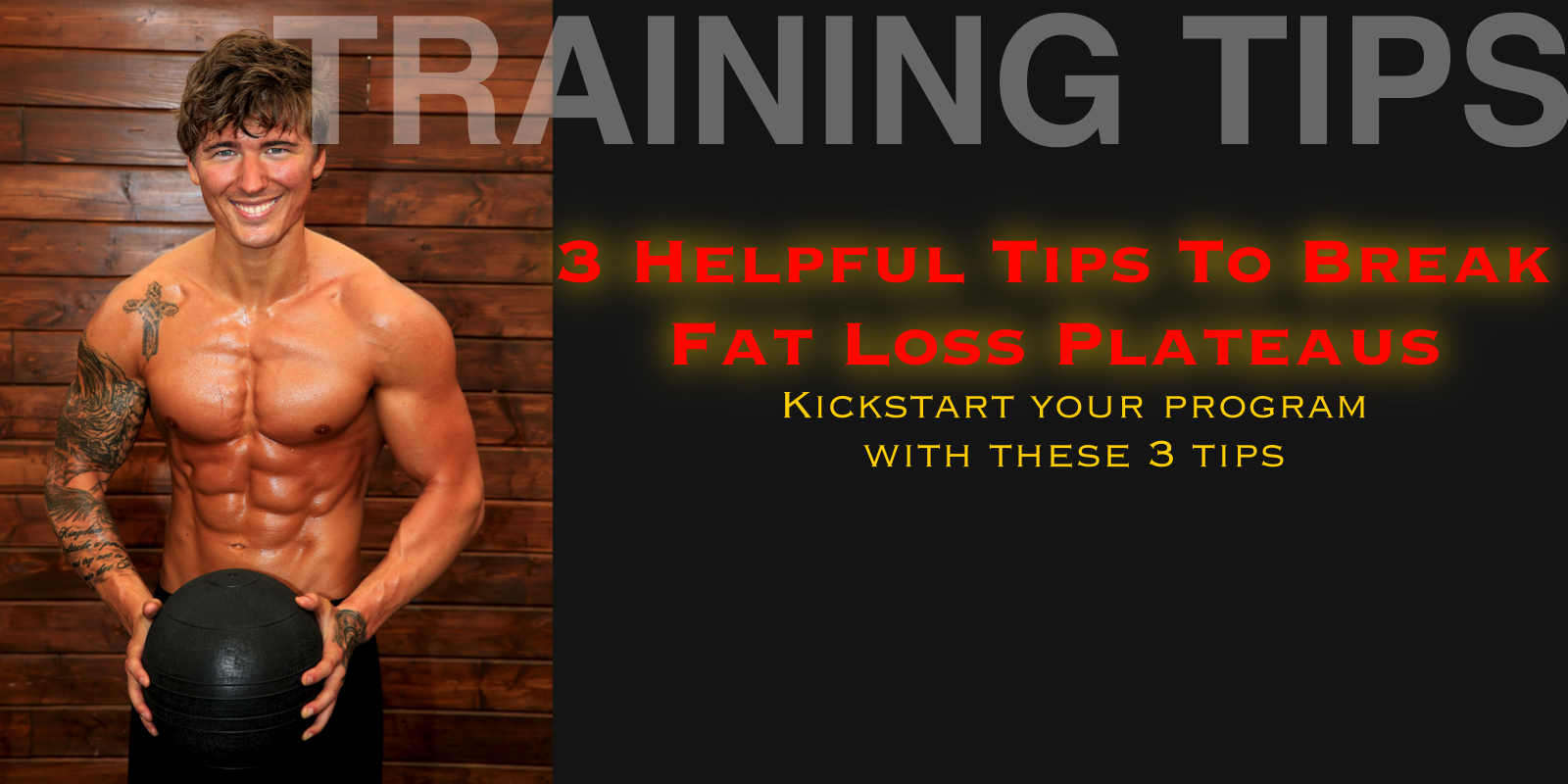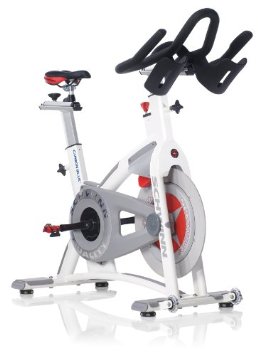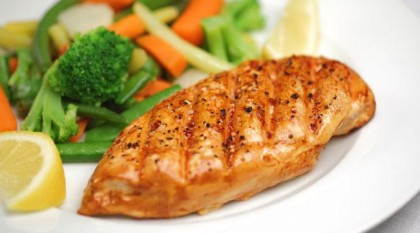3 Helpful Tips To Break Fat Loss Plateaus

 1. Add 2-3 Fasted Cardio Sessions Per Week
1. Add 2-3 Fasted Cardio Sessions Per Week
Start with 2 and see how your results are after the first two weeks. Remember, always look long term and avoid doing too much too fast or you will burn out and further plateau. Preferably perform 2 High Intensity Interval Sessions on an empty stomach, first thing in the morning. An example of a HIIT cardio workout would be 10 rounds of 1 minute all out effort (and I mean everything you got!) followed by 1 minute cool down/jog on a cardio machine of your choice. I personally own a spin bike and enjoy the leg workout from it. Don’t just stick to machines though, I admit cardio machines make it easier to “cheat” and take the easy route. If you can, go to an open field and run 10 sets of 20,30, or 40 yard sprints, jogging back to the start line before sprinting again. I know some think fasted cardio is a waste of time. However, the fact remains that you DO oxidize more fat for energy during fasted cardio, so it is a little bit more beneficial as long as you can perform the same intensity as if you were in a fed state and do not consume additional calories throughout the day. The idea of breaking a plateau is to try something new and break old routine. However, if your schedule doesn’t permit cardio first thing in the morning, its OK to do it in a fed state later in the day, you will still reap big benefits!
 2. Consume 300-500 extra calories for a week.
2. Consume 300-500 extra calories for a week.
You need to focus on taking care of you metabolism if you want to keep your results in the long run. When we diet in a caloric deficit to lose body-fat we are consuming fewer calories than we need to maintain our body weight – this is the reason you lose. As good as this is, its actually bad for our resting metabolic rate long term if we don’t take measures to keep it from adapting. Your body is always fighting for a state of homeostasis, a set point. If you go on a iso-caloric diet, keeping calories consistently low, your body will adapt by burning less calories than before, this is a beautiful yet frustrating survival mechanism. Taking short breaks from your diet 3-7 days every so often can actually help you keep your body from adapting too much. A protocol that’s worked in some studies reference by Dr. Jacob Wilson, is to drop in a caloric deficit for 11 days then bring your calories up to “maintenance” for 3 days before then jumping back down into a deficit once again. If you find yourself plateauing it could benefit you to actually bring your calories up by 300-500 calories a day, for at least 3 days which could possibly restore the hormones responsible for letting you burn body-fat. The lower your body fat gets the more your body is going to fight you so cutting more calories is not always a good idea as the rate at which your body will adapt, that’s why I like this approach. Nourishing your body with more healthy food should always be a priority, not starving, to get rid of excess body-fat. The trick is to be disciplined here and not binge eat for 3 days, grossly over consuming calories WILL set you back.
 3. Squat at the end of your regular workouts.
3. Squat at the end of your regular workouts.
I’ve found this to be effective. Picking a rep scheme whether its 10×10, 5×5, or 6×3 (6 sets of 3 reps). You can switch between barbell back squats or barbell front squats. However, only perform this if you are positive you have good squatting technique and no muscle imbalances or postural distortions. If you’re not sure on your technique, hire a personal trainer, as form is VERY important and proper squat technique can take some time to develop. If you can perform this – not only will your leg develop take off and legs get strong squatting frequently, the tissue turnover from training legs frequently will help burn additional calories. I always tell my clients legs are the gateway to burning body fat. The squat is the king for a reason, it hits most major muscles in the body. The benefit here over typical cardio is that you will build muscle in the long term which will raise your resting metabolic rate – the rate at which you burn calories while resting. Be bold, be brave and get under the bar!
Please share this with your friends and continue to keep after your goals. Be patient, dedicated and always continue to learn!
To your success,
John Reed